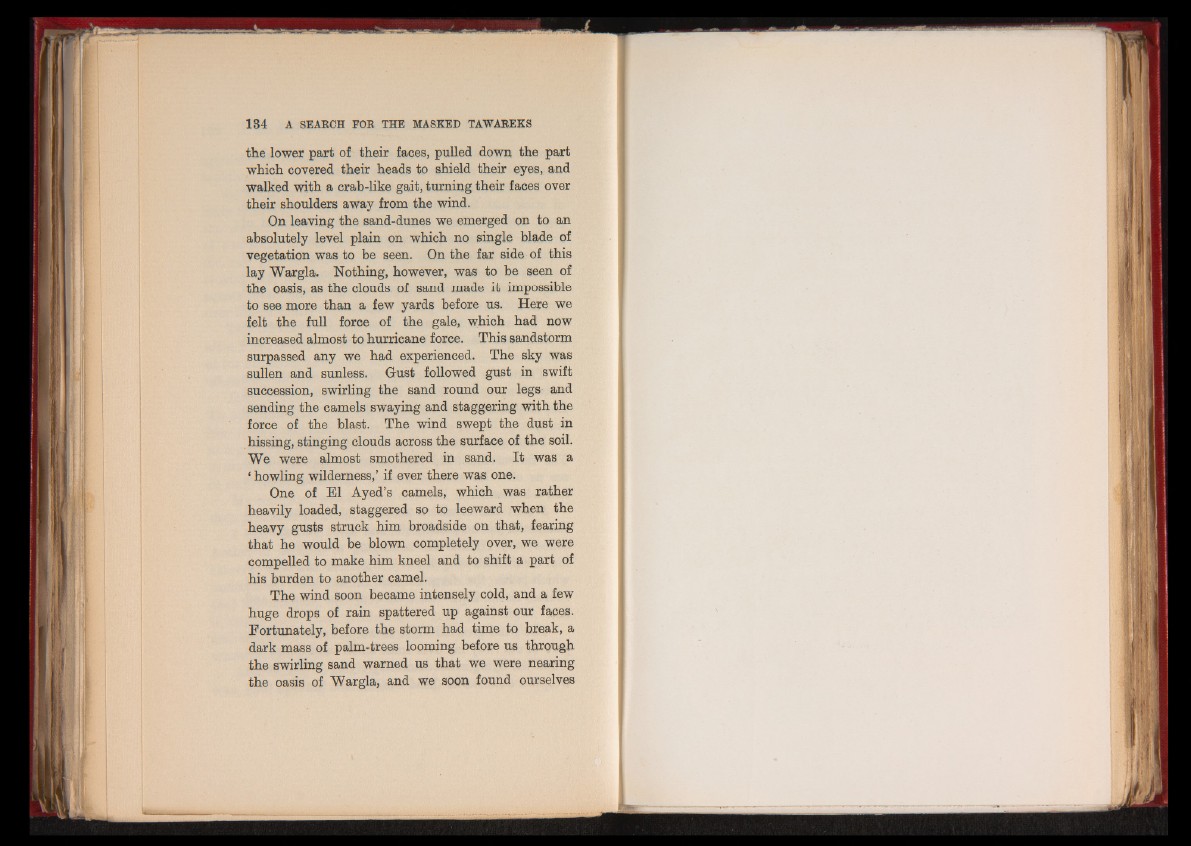
the lower part of their faces, pulled down the part
which covered their heads to shield their eyes, and
walked with a crab-like gait, turning their faces over
their shoulders away from the wind.
On leaving the sand-dunes we emerged on to an
absolutely level plain on which no single blade of
vegetation was to be seen. On the far side of this
lay Wargla. Nothing, however, was to be seen of
the oasis, as the clouds of sand made it impossible
to see more than a few yards before us. Here we
felt the full force of the gale, which had now
increased almost to hurricane force. This sandstorm
surpassed any we had experienced. The sky was
sullen and sunless. Gust followed gust in swift
succession, swirling the sand round our legs and
sending the camels swaying and staggering with the
force of the blast. The wind swept the dust in
hissing, stinging clouds across the surface of the soil.
We were almost smothered in sand. It was a
‘ howling wilderness,’ if ever there was one.
One of El Ayed’s camels, which was rather
heavily loaded, staggered sp to leeward when the
heavy gusts struck him broadside on that, fearing
that he would be blown completely over, we were
compelled to make him kneel and to shift a part of
his burden to another camel.
The wind soon became intensely cold, and a few
huge drops of rain spattered up against our faces.
Fortunately, before the storm had time to break, a
dark mass of palm-trees looming before us through
the swirling sand warned us that we were nearing
the oasis of Wargla, and we soon found ourselves